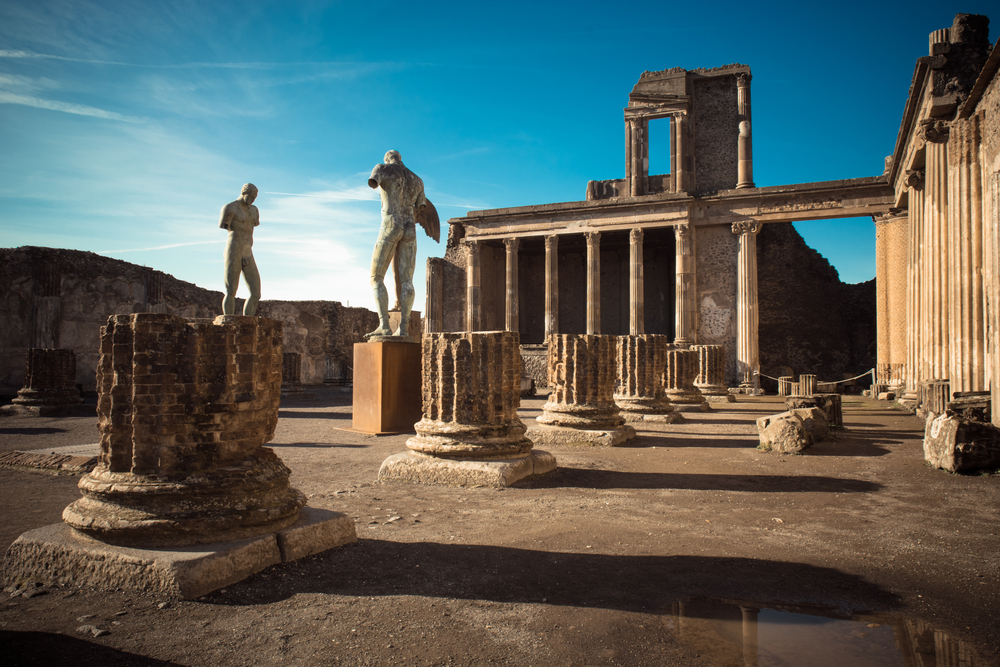
This article was originally published on July 7, 2022.
Scientists have fully sequenced the DNA of a victim from Pompeii
The morning of August 24 could have started like any other for the 30-year-old. Of Mediterranean descent, he probably had back pain, something that probably didn’t help him much in the forge where he may have worked. But around noon on the same day in AD 79, everything changed when the volcano Vesuvius began to erupt in the area of Pompeii.
The man was covered in ash for nearly two millennia, along with an older woman with a bag of money. The two were first discovered by archaeologists in the early 20th century. But it wasn’t until recently that DNA preserved in the man’s bones was successfully extracted and sequenced, helping to inform scientists about his origins and genetic connection to modern Mediterranean people.
The recent discovery also marks the first time scientists have been able to fully sequence the genome of someone who died in Pompeii. “He had fantastic, beautiful DNA that looks like almost a complete, whole genome,” says Fabio Macciardi, a molecular psychiatrist at the University of California, Irvine and one of the co-authors of a recent Scientific Reports study. “I would say it was an unexpected discovery.”
Ancient DNA: How Pompeii’s Victims Died
When Mount Vesuvius erupted, it covered the surrounding area the city of Pompeii (which lies about 14 miles southeast of modern Naples) in volcanic rock and ash. Hot gases followed the next day, suffocating the townspeople. The same disasters that destroyed Pompeii and its people also preserved them perfectly until their rediscovery in the 18th century.
The remains are so extensive that many areas are still being excavated centuries after they were first discovered. More recently, for example, researchers discovered remains of a pregnant turtle who may have been looking for a place to lay eggs when disaster struck.
The remains of an ancient turtle in Pompeii. (Credit: Pompeii Archaeological Park)
The remains of what appears to be a blacksmith’s house were first discovered in the early 20th century, known as Casa del Fabbro, or the Craftsman’s House. A man, possibly aged between 30 and 35, was found inside the structure, lying on a Roman couch, or lectus, while a woman aged 45 or older is crouched by a nearby chair with a bag of money.
Read more: Before Pompeii, a volcano covered this ancient village in volcanic ash
Archaeologists were unable to examine these remains in more detail until recently, when they discovered that some bones were well preserved. Additionally, the skulls of both individuals were encased in ash, preserving the dense petrous bone near the ear, an area where intact DNA is also likely to be preserved. The research team then contacted Macciardi, who typically studies DNA that causes neuropsychiatric disorders in modern humans. But studying ancient DNA, like the samples from Pompeii’s victims, can also reveal a lot about how our brains have evolved over time.
Saved issues
Macciardi was initially skeptical that the genetic material would be intact after so many years. Although researchers have opened the petrified bones and seen that some DNA is indeed preserved, they are still not sure if it came from ancient humans and not from bacteria, parasites or even contamination in the lab. “We were surprised to find that it was the human genome of this particular individual,” says Macciardi.
Further analysis revealed bacteria indicating the man suffered from spinal tuberculosis, sometimes known as Pott’s disease, a debilitating and painful condition that slowly causes the vertebrae in the body to collapse. “It practically cuts through your bones,” says Macciardi, adding that the man probably didn’t know what was causing him to suffer because doctors didn’t know about the condition at the time.
Although he was discovered in a forge, the man himself was not necessarily a blacksmith. Macciardi says it’s unclear why he didn’t run after the eruption — it’s possible he was left behind to protect the house. The older woman found nearby didn’t have enough DNA preserved for researchers to sequence, but it’s possible she was trying to hide the bag of money before the two fled. However, since little more is clear about the context in which they were found, it is also possible that the two were looting the abandoned forge amid the chaos of the disaster.
“There are a lot of interesting questions, but we’ll probably never know the answers,” adds Macciardi.
The man’s DNA also revealed that he was Mediterranean. “The DNA shows that he is very similar to other known citizens sequenced in other villages or even in Rome [at the time]says Macciardi. One of the man’s parents was probably from Sardinia, and several generations earlier he had an ancestor from the Middle East or Turkey. The fact that he was probably local indicates that he was probably not a slave, since slaves were often drawn from more distant parts of the Roman Empire in North Africa or the Middle East, Macciardi says.
The man’s DNA is also quite similar to modern Mediterraneans living in southern Italy, Greece and Spain, Macciardi says. “The Roman Empire had a huge impact on the current population,” he adds. Ultimately, the researchers hope that these initial findings can serve as a basis for further genetic analysis of other Pompeian victims who met a similar grim fate that day.

